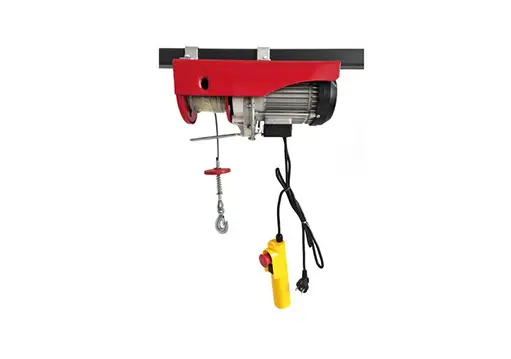


Chain Hoist Design Key Considerations and Innovations
Chain hoists are vital tools in various industries, including construction, manufacturing, and entertainment, used for lifting and lowering heavy loads with efficiency and safety. The design of a chain hoist plays a crucial role in its performance, reliability, and overall effectiveness. In this article, we will explore key considerations in chain hoist design, including mechanical components, safety features, and recent innovations in technology.
Mechanical Components
At the core of any chain hoist is its mechanical design, primarily comprising the lifting mechanism, chain system, and the housing structure. The lifting mechanism usually involves a drum or pulley system that rotates to wind or unwind the chain as needed. A significant factor in this design is the selection of materials; components must be sturdy enough to handle the stress of lifting heavy loads while remaining lightweight to enhance maneuverability.
The chain itself is another vital element. A high-quality, durable chain prevents wear and tear, which is critical for safety and operational efficiency. Chains are typically made from alloy steel or similar materials that provide high tensile strength. Additionally, chain design can influence load capacity and speed. Hoists may also feature different chain configurations, such as roller chains or link chains, depending on their intended application.
Safety Features
Safety is paramount in chain hoist design. Modern hoists incorporate several safety features to minimize risks during operation. Overload protection is one crucial aspect, ensuring that the hoist cannot lift beyond its rated capacity. This is often achieved through automatic shut-off systems or mechanical stops that prevent the hoist from operating if the load exceeds a specific weight.
Another significant safety feature is the inclusion of a braking system. Hoists typically utilize both dynamic and static brakes to ensure that loads do not fall inadvertently. These brakes must be thoroughly tested and designed to engage quickly when needed, providing an additional layer of security.

Ergonomic design also plays a role in safety. Operators should be able to manipulate the hoist comfortably and efficiently, minimizing fatigue and the risk of errors. This consideration may involve the design of controls, handles, and overall balance of the unit.
Innovations in Technology
In recent years, advancements in technology have greatly influenced chain hoist design. The integration of electronic controls and smart technology has enabled more precise handling of loads. Wireless remote controls allow operators to manage the hoist from a distance, reducing the risk of injury and enabling better visibility when maneuvering heavy objects.
Moreover, digital load indicators can now be incorporated into chain hoists, providing real-time feedback to operators about load weight and hoisting speed. This technology aids in preventing overload situations and enhances operational efficiency.
Furthermore, manufacturers are increasingly focusing on modular designs, which allow for easy customization and maintenance. Users can configure hoists to suit specific applications, from light-duty lifting to heavy industrial use. This flexibility can lead to improved performance and user satisfaction.
Conclusion
The design of chain hoists is a complex interplay of mechanical engineering, safety considerations, and cutting-edge technology. By focusing on robust mechanical components, incorporating essential safety features, and embracing innovation, manufacturers can produce chain hoists that meet the diverse needs of various industries. As technology continues to advance, we can expect to see even more efficient, reliable, and user-friendly chain hoist designs in the future, paving the way for safer and more effective lifting solutions.



